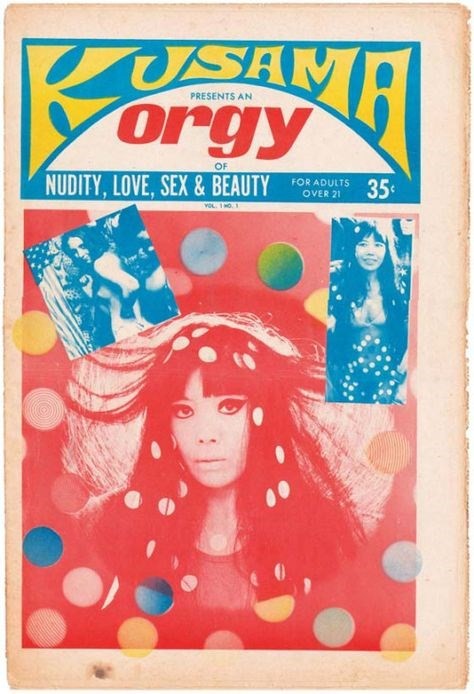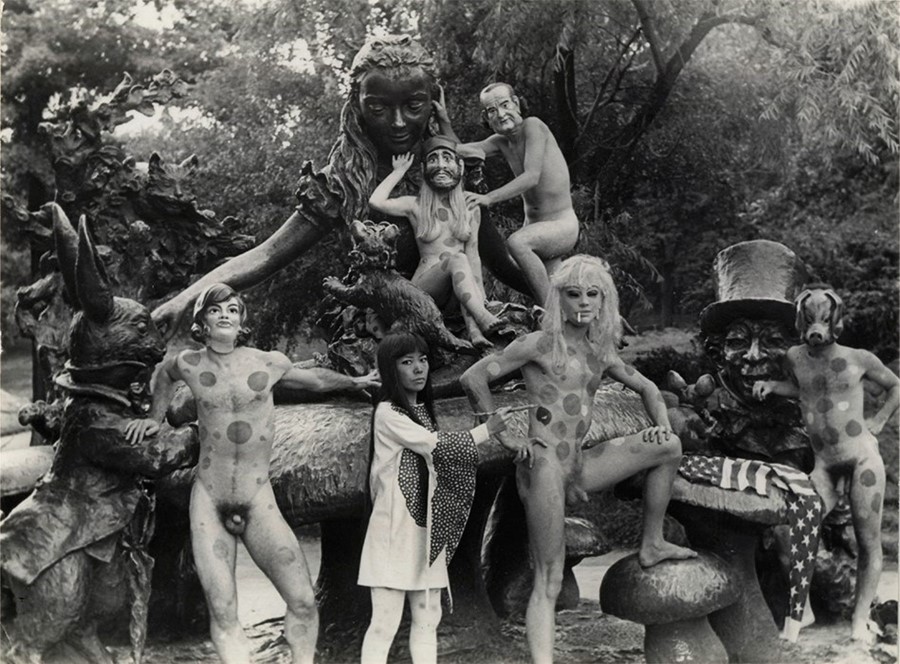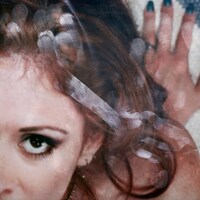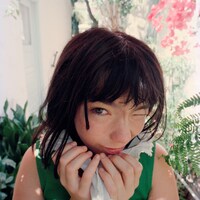The Japanese artist become synonymous with staging theatrical orgies in the streets of New York and offering Richard Nixon sex in exchange for peace
Before she was known as the queen of colour and pattern, Yayoi Kusama was obsessed with orgies. Back in the 60s, the Japanese artist was at the centre of a new avant-garde emerging in New York, where she became known for staging theatrical, and often impromptu, ‘body festivals’, where Kusama and her bande à part of free-spirited hippy friends would assemble in various locations across the city and, essentially, cover themselves in Kusama’s now-trademark polka dots, before spiralling into orgiastic tangles of paint and limbs. Audience participation was optional.
“I made my art to try and change peoples’ minds about the love in the world that can last forever,” Kusama explains in her 2018 documentary Infinity. “I wanted to spread hope to the world through my artwork.” For Kusama, group sex and nudity was synonymous with protest, and her red-and-white polka dots, a weapon against a self-serving society run by the individual.
Some critics have interpreted Kusama’s ‘happenings’ as publicity stunts, thinly-veiled attempts at using the free-love movement to further her artistic practice. Admittedly, publicity was something that Kusama factored heavily into her work (she even went as far as to declare it “my art” in her Kusama’s Orgy zine), but so was sex. Sex, and more specifically, group sex, became ways in which to become one with the universe, or ‘self-obliterate’. Kusama’s obsession with orgies, then, is no different to her obsession with polka dots or Infinity Rooms. Each is a bouncing board to eternity, and requires you to step outside your individual ego, constrained by time and space, into the collective or eternal.
It makes sense, then, to interpret Kusama’s orgies as an act of Lacanian jouissance. Sex, as the pinnacle of life, and – while this is conventionally thought as the diametric opposite of death – is also symbolic of death itself. Simply put, in giving yourself up to the ‘unity’ of the group, you’re giving up a part of yourself, and in doing so, stepping into ‘obliteration’.
Below, we explore some of Kusama’s key orgiastic works.
“KUSAMA’S SELF-OBLITERATION” (1967)
This 1967 experimental film is a prime example of Kusama embodying the free love zeitgeist of 1960s America counterculture, characterised by radical performance art, communal living, and a return to nature. The film itself is an avant garde kaleidoscope of colour and polka dots: woozy footage of Kusama riding a horse, wading through water, and covering a man in leaves, before planting him in the ground like a seed.
The final three minutes of the short devolves into a Boschian sprawl of paint and sex: the film’s formerly beningn subjects burst into an orgiastic tumble, with dotted dancers binding, whipping, and eventually, beating each other in bacchanalian revelry.
“NIXON ORGY” (1968)
Perhaps the most ambitious of Kusama’s ‘happenings’ was her 1968 “Nixon Orgy”, where she offered Richard Nixon sex in exchange for ceasefire in the Pacific, causally. The then-39-year-old artist had previously written an open letter to Nixon, urging him to end the Vietnam war. “You can’t eradicate violence by using more violence,” she wrote. “This truth is written in the spheres with which I will lovingly, soothingly, adorn your hard masculine body,” before urging: “Gently! Gently! Dear Richard. Calm your manly fighting spirit!”
While the president-to-be never responded to her offer, Kusama staged an orgy in her Manhattan studio, which she’d decorated with posters of Nixon and Malcolm X, prop guns, and an American flag.
“HOMOSEXUAL WEDDING” (1968)
The show was proclaimed the “first homosexual wedding ever be performed in the United States” in a press release issued by Kusama’s self-styled Church of Self-Obliteration from a loft on Walker Street, Manhattan, in 1968. For the ceremony, which would be conducted by the artist herself, Kusama designed an “Orgy Wedding Dress” for the bride and groom, complete with holes in intimate areas to accommodate several people. “Clothes ought to bring people together, not separate them”, wrote the press release. Kusama herself wore a bright pink “Phallic Dress”, decorated with stuffed phallic protrusions, similar to those found on her “Accumulation Sculptures”.
KUSAMA’S ORGY MAGAZINE

As Kusama’s naked ‘happenings’ grew increasingly notorious, so did the hoards of police who came to arrest the artist and her troup of naked performers. In response, Kusama embarked on a series of less criminally damning projects, including Kusama Musical Productions, Kusama Fashions, and a short-lived X-rated tabloid magazine, Kusama’s Orgy.
“Publicity is part of my art,” declared Kusama in the sexual liberation zine, which included witty tidbits like “$5 gets you the next six orgies” and “all orgies sent via first-class mail.” Artists “have to be in favour of publicity, good or bad,” she wrote, because “the garret life of Van Gogh and Modigliani is not where it’s at.”
“GRAND ORGY TO AWAKEN THE DEAD” (1969)
Perhaps the most infamous of Kusama’s ‘happenings’ was her 1969 performance, “Grand Orgy to Awaken the Dead”, which took place outside the MoMA. Kusama painted dots on the bodies of naked performers as they kissed and fucked in the fountain of the sculpture garden amid equally nude sculptures (“I did body painting while my models fucked a bronze sculpture by Maillol,” described Kusama in a 2017 interview with Artspace). The idea was to protest the institution’s primary focus on the work of dead artists – a leaflet for the event read: “At the museum you can take your clothes off in good company: Renoir, Maillol, Giacometti, Picasso.”
The following day, the show was on the front page of the Daily News, with the headline, “Is this art?” and media interest in Kusama’s work shifted from serious critical attention to tabloid fodder, where the artist was accused of performing cheap publicity stunts for fame. Ironically, Kusama returned to the MoMA 30 years later for a solo exhibition, Love Forever: Yayoi Kusama, 1958-1972. Just like one of her polka dot paintings, her career had come full-circle: it was repeating and obliterating itself.




